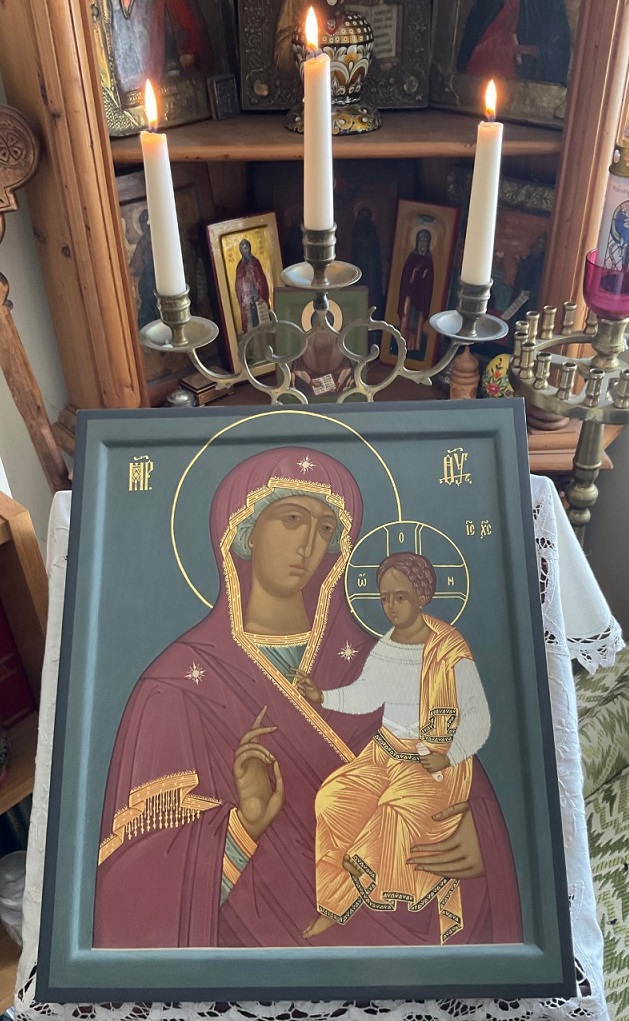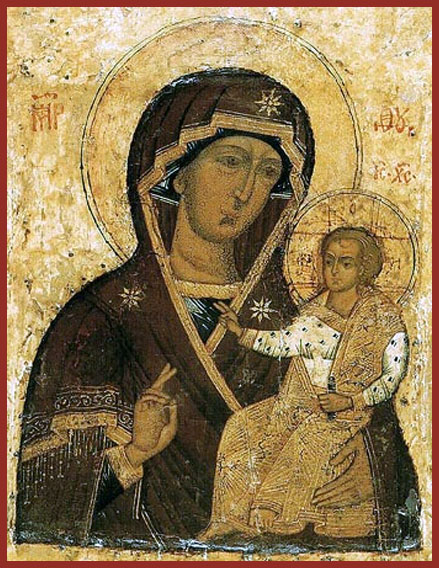Dear brothers and sisters, in addition to being the feast of the Tikhvin Icon of the Mother of God, today is also the feast of the Seven Lakes Kazan Icon of the Most Holy Theotokos. The photograph is of one of my favourite cell-icons.

Its origin story relates that near the end of the 1500s, a fellow named Evfimiy was born to a poor family. Being a pious individual, he went to live in a monastery. When his parents died, he inherited an icon of the “Smolensk” type from them, which he took with him to the region of Kazan. He eventually settled in a secluded place many miles from the city. It was surrounded by seven lakes. There he eventually founded a monastery.
Though some time later he went to live in the Metropolitan’s house in Kazan, he nonetheless continued to guide the monastic community he had begun, and he also decided to give up his inherited “Smolensk” icon to the Seven Lakes monastic community. The wooden church at the monastic site was eventually replaced by a stone church, and the “Smolensk” icon was placed in it, on the left side of the Royal Doors that led to the altar.
In June of 1654, there was a severe plague in Kazan, and people were dying. It was decided to send the Seven Lakes – Sedmiezernaya – “Smolensk” icon to the city.
It is said that a nun had a vision in her sleep, in which a shining old man who looked like St. Nicholas appeared to her, telling her that the people of Kazan should fast for a week and repent, and that the Mother of God was coming to the city to save the people from the plague.
The nun did not do as she was told, so the old man appeared to her when she next slept, scolding her. Finally, she went to the city officials and reported her vision. According to tradition, all the citizens of the city went out, carrying their own “Kazan” icon, to formally meet and welcome the Sedmiezernaya icon some two miles from the city, where they fell to their knees and prayed for “her” help in ending the plague.
It is said the plague subsided when the icon was carried in procession around the city of Kazan. The city eventually returned the icon to the Seven Lakes Monastery, but again in 1656 there was a plague in Kazan, so the icon was brought back to Kazan, and again the plague subsided. After that, it became the custom to bring the icon from the Seven Lakes Monastery to the city of Kazan each year, when it would leave the monastery on June 25th and be brought into the city in a formal procession on June 26th (July 9, New Style).
The “Seven Lakes” Icon is also commemorated on July 28 and October 13.

Never, O Mother of God, will we cease to speak of thy powers, unworthy as we are. For if thou didst not intercede in prayer, who would have delivered us from so many dangers? Who would have kept us free until now? Let us never forsake thee, our Lady, for thou ever savest thy servants from all perils.